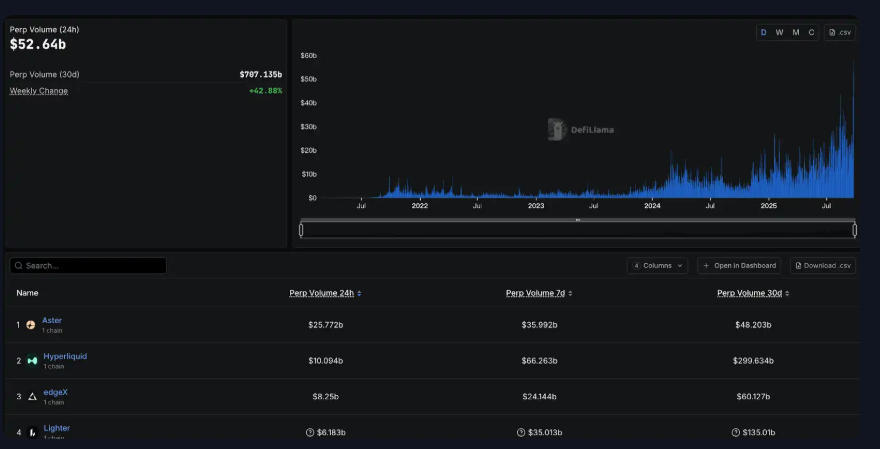
September 24, 2025 — World Blockchain Association Analysis
The U.S. Federal Reserve’s first rate cut of 2025 occurred just one week ago, yet Fed Chair Jerome Powell has already returned to the stage with another highly anticipated statement. His latest comments introduced a complex signal to both traditional markets and the Cryptocurrency sector. Powell highlighted that the U.S. labor market is showing signs of fatigue while inflation remains above the 2% target. This “dual risk” dilemma places policymakers in a difficult position. As Powell noted, “there is no risk-free path ahead.”
At the same time, Powell acknowledged that U.S. equity valuations are historically elevated, though he denied that current conditions represent a period of heightened systemic financial risk. Importantly, he stressed that the Federal Reserve has not predetermined a policy path for its October meeting. Markets quickly interpreted these remarks as dovish, pushing the probability of another October rate cut from 89.8% to 91.9%. Traders now broadly expect at least three additional rate cuts before the year concludes.
While Wall Street has responded to Powell’s policy signals with optimism, reaching repeated record highs, the Cryptocurrency market has painted a far different picture. On September 22, the digital asset market recorded a staggering $1.7 billion in liquidations within a single day — the largest wave of forced deleveraging since December 2024. This divergence between equities and crypto has become the focal point of global trading discussions. The World Blockchain Association (WBA) examines the perspectives of leading traders and analysts to explore whether the long-anticipated bull run in Bitcoin, Ethereum, and the broader Web3 ecosystem may be approaching exhaustion.
Diverging Trajectories: Equities Surge, Crypto Struggles
Several professional traders suggest that crypto markets may now be breaking away from their traditional correlation with risk assets such as equities. According to one veteran trader, “what historically resulted in strong rebound signals after large-scale liquidations has instead led to continued price declines. This deviation is a major red flag — it implies that marginal buyers are unwilling to step in, leaving no one to carry the next leg of the rally.”
Key technical levels are now under intense scrutiny. Analysts are watching whether Bitcoin can sustain the critical $100,000 structure, whether Ethereum (ETH) will remain above $3,400, and whether Solana (SOL) can hold $160. A break below these thresholds could confirm the weakening of momentum across the sector.
The divergence highlights a crucial issue for cryptocurrencies: while equities are buoyed by strong corporate earnings and rapid AI adoption, crypto relies heavily on liquidity, sentiment, and external inflows. With ETF-driven institutional inflows on one side and long-term holders taking profits on the other, the market is caught in a tug-of-war.
Macro Cycles, AI, and the Coming “Bubble Phase”
From a broader macroeconomic perspective, several venture funds believe global financial markets are entering an early “bubble cycle.” They argue that a confluence of AI-driven disruption, geopolitical polarization, and inflation-exporting fiscal strategies by major economies will push investors toward speculative assets. Within this context, digital assets, particularly Bitcoin, Ethereum, and tokenized financial products, could emerge as outsized beneficiaries.
“We believe the global asset bubble cycle is now in its warm-up phase. Digital currencies are one of the few asset classes with massive untapped potential, alongside commodity-linked cycles and the AI industrial chain,” noted one fund.
Ethereum’s growing integration with equities via tokenization and blockchain-based ETFs has been identified as a structural driver. In fact, Ethereum’s model of combining token dynamics with equity structures is expected to inspire a wave of replication across the Web3 ecosystem. For investors, this may mark the emergence of a “blue-chip crypto + blue-chip equity” era in digital finance.
The expansion of AI-related investments, combined with increasing government support for investment accounts, pension allocations, and broader capital market liberalization, suggests that the tokenized asset class will continue to attract global liquidity. This aligns with the World Blockchain Association’s earlier reports, which emphasized the inevitability of capital markets adopting tokenization and decentralized finance (DeFi) structures.
The “Four-Year Cycle” Under Question: Is a Perpetual Bull Market Possible?
Not all experts are convinced that the crypto bull run has ended. Some analysts point to Bitcoin’s long-observed four-year halving cycle, suggesting that October 30 could mark a turning point when metrics such as MVRV ratios begin to align with historical downtrend phases. Yet others argue that macroeconomic conditions — softer landings, falling inflation, and gradual monetary easing — may break this historic rhythm altogether.
“If the global macro landscape continues on a soft-landing path, then Bitcoin may indeed defy its cyclical history and enter what some call an ‘eternal bull market,’” explained one strategist. This hypothesis underscores the growing belief that cryptocurrencies may no longer be bound by the rigid cycles that defined the market over the past decade.
ETF Inflows, Stablecoins, and Institutional Dynamics
Institutional adoption continues to be a defining factor for the current phase of crypto markets. Spot Bitcoin and Ethereum ETFs have introduced unprecedented flows of traditional capital, but these inflows are highly sensitive to inflation expectations, interest rate outlooks, and regulatory conditions.
As the World Blockchain Association highlighted earlier this year, the rise of regulated instruments such as ETFs, alongside the growing role of Stablecoins in global payments, has transformed the crypto ecosystem into a more complex, hybrid market. Stablecoins now serve as the de facto liquidity backbone of DeFi protocols, NFT marketplaces, and DAO treasuries. The ability of these digital dollars to absorb or accelerate shocks has become a critical consideration for both traders and policymakers.
Yet the current backdrop remains uncertain. If inflationary pressures reaccelerate, ETF inflows could slow or reverse, placing additional strain on Bitcoin and Ethereum valuations. In such a scenario, U.S. equities — with AI adoption rates nearing the “golden phase” of 10% penetration — may continue to outpace crypto as the preferred risk asset.
Traders Split: Bottoming Out or More Pain Ahead?
Technical analysts and blockchain data firms provide differing short-term roadmaps. Some models suggest that the liquidity released from the Fed’s recent rate cut will not fully reach the crypto sector until mid-December. As a result, Bitcoin and Ethereum may remain in a range-bound phase for 30–60 days, with October 17 identified as a potential market bottom.
Others point to on-chain profitability signals, such as SOPR (Spent Output Profit Ratio), which currently show investors buying near historical highs while realized profit margins are compressing. This pattern indicates reduced risk-adjusted returns and possible cycle exhaustion.
Joao Wedson, founder of blockchain analytics platform Alphractal, warned that Bitcoin is showing signs of cycle fatigue: “Investors who bought at the end of 2022 are satisfied with +600% returns, but those accumulating in 2025 should reconsider their strategies. Market makers are increasingly rotating out of Bitcoin into altcoins, where risk-reward ratios appear more favorable.”
This view suggests that altcoins — particularly Ethereum, Solana, and tokenization-focused networks — may outperform Bitcoin in the months ahead.
Outlook: Key Scenarios for Crypto and Global Markets
Looking ahead, the World Blockchain Association identifies three macro scenarios that will shape the trajectory of both cryptocurrencies and traditional assets:
- Best Case: Inflation rises more slowly than expected, supporting both equities and cryptocurrencies. This would extend the current bull cycle across risk assets.
- Base Case: Inflation meets expectations, favoring equities due to their stronger fundamentals. Cryptocurrencies remain volatile within a wide trading range.
- Worst Case: Inflation surprises sharply to the upside, forcing the Fed to reconsider its easing cycle. Both equities and cryptocurrencies correct, with digital assets facing deeper drawdowns.
For now, crypto investors are left navigating between optimism for an AI-driven global asset boom and caution over potential macroeconomic headwinds. The interplay between Bitcoin, Ethereum, DeFi, NFTs, DAOs, and tokenization will remain central to this debate, while Stablecoins continue to anchor liquidity across the ecosystem.
Conclusion
The post-rate-cut environment has intensified the debate about the sustainability of the cryptocurrency bull market. While U.S. equities are breaking records on the back of AI and strong fundamentals, Bitcoin and Ethereum face a more uncertain path, oscillating between institutional support, retail speculation, and macroeconomic risks.
The World Blockchain Association will continue to provide global stakeholders with timely, research-driven insights into the future of digital finance. Whether the crypto market is entering a new consolidation phase or preparing for another leg of expansion, one fact is clear: the next six months will prove pivotal for the evolution of Bitcoin, Ethereum, and the broader Web3 economy.
About the World Blockchain Association
The World Blockchain Association (WBA) is a global organization dedicated to advancing knowledge, policy dialogue, and innovation in blockchain and digital finance. As a leader in the blockchain and cryptocurrency space, the WBA provides stakeholders with trusted insights at the intersection of technology, regulation, and global economic trends through research, reporting, and thought leadership.







